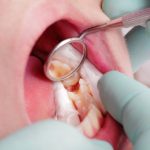
Dental amalgam and resin-based composite are the most common materials used to restore permanent teeth once dental caries has progresses to a stage where it must be restored. Lining materials have been used since the 19th century to protect the pulp from the toxic effect of some materials and to reduce thermal conductivity. Resin-based composites have a thermal conductivity similar to the natural tooth and there is some debate over whether the use of a liner under this material is necessary.
The aim of this Cochrane review is to assess the effects of using dental cavity liners in the placement of Class I and Class II resin-based composite posterior restorations in permanent teeth in children and adults.
Methods
Searches were conducted in the Cochrane Oral Health’s Trials Register, the Cochrane Central Register of Controlled Trials (CENTRAL), Medline, Embase, LILACS, ClinicalTrials.gov, World Health Organization International Clinical Trials Registry Platform without restrictions. Parallel and split-mouth randomised controlled trials(RCTs) assessing the effects of the use of liners under Class I and Class II posterior resin-based composite restorations in permanent teeth were considered. Standard Cochrane methodological approaches were followed.
Results
- 8 studies (3 split-mouth, 5 parallel) were included.
- 5 studies were considered to be at high risk of bias, 3 at unclear risk.
- 7 studies evaluated postoperative hypersensitivity measured by various methods. There was inconsistent evidence regarding postoperative hypersensitivity (either measured using cold response or patient-reported), with a benefit shown at some, but not all, time points (low-quality evidence).
- 5 trials measured restoration longevity.
- No difference in restoration failure rates were shown at one-year follow-up, with no failures reported in either group for three of the four studies; the fourth study had a risk ratio = 1.00 (95%CI; 0.07 – 15.00) low-quality evidence.
- 3 studies evaluated restoration longevity at two years follow-up and, again, no failures were shown in either group.
- No adverse events were reported in any of the included studies.
Conclusions
The authors concluded: –
There is inconsistent, low-quality evidence regarding the difference in postoperative hypersensitivity subsequent to placing a dental cavity liner under Class I and Class II posterior resin-based composite restorations in permanent posterior teeth in adults or children 15 years or older. Furthermore, no evidence was found to demonstrate a difference in the longevity of restorations placed with or without dental cavity liners.
Comments
As the authors note in their introduction to this review there is a significant variation in what is taught in dental schools in relation to the placement of liners under resin-based composites. The evidence identified for this Cochrane review which as usual is based on an extensive search of the literature is limited to 8 studies. While the evidence identified is of low quality the authors suggest in their discussion that using a liner is an unnecessary step in routine composite-based restorations in adult posterior teeth.
Links
Primary paper
Schenkel AB, Peltz I, Veitz-Keenan A. Dental cavity liners for Class I and Class II resin-based composite restorations. Cochrane Database of Systematic Reviews 2016, Issue 10. Art. No.: CD010526. DOI: 10.1002/14651858.CD010526.pub
Other references

[…] post Cavity liners for posterior resin based composites? appeared first on National Elf […]
Cavity liners for posterior resin based composites? https://t.co/wBZ8I9bo09
Cavity liners for posterior resin based composites? https://t.co/uEjGTmgh8A
No difference in longevity of posterior resin based composites without cavity lining https://t.co/uEjGTmgh8A
Posterior resin based composites-postop sensitivity benefit from cavity lining inconsistent https://t.co/uEjGTlYFK0
Cavity lining unnecessary for routine composite-based restorations in posterior teeth https://t.co/uEjGTmgh8A
Don’t miss – Cavity liners for posterior resin based composites? https://t.co/uEjGTmgh8A